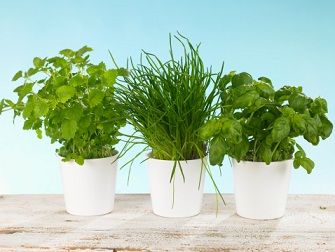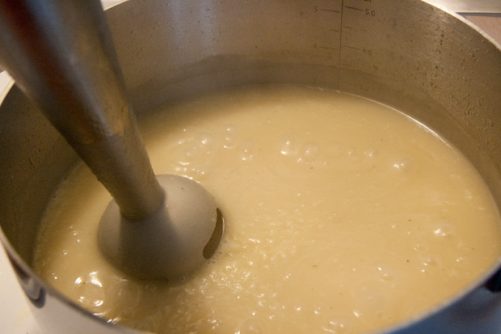How to Add Flavor Without Adding Salt, Sugar or Fat
This post contains Amazon affiliate links. If you make a purchase after visiting a link, this website earns a small commission at no extra cost to you. Thanks for supporting Craving Something Healthy.
A few weeks ago, I wrote about our obsession with (or dare I say addiction to) salt, sugar and fat, and I recommended the book by Michael Moss, to learn more about how big food manufacturers keep us hooked. There is of course, a reason food companies add so much salt, sugar and fat to most of the products we buy – they make food taste good!
Even if you swear off all packaged “convenience” foods, and go the home cooked route, you may still find yourself adding ample amounts of salt, sugar and/or fat to make your recipes taste better. Unfortunately, if you’re trying to cut calories to lose weight, or you want to limit sodium for your heart, you may feel that you’re missing out on flavor.
Lucky for you I’m in a sharing mood! I have a few tips and tricks that I use to boost flavor of some recipes, without adding large amounts of salt or sugar, and to give the creamy mouth feel of fat, while still keeping the calories on the down low. Here are a few of my favorites:
Saute and Sear. All vegetables used in soups or stews (especially onions) should be sautéed in a bit of olive oil until they give up their liquid and start to turn slightly brown. This caramelization results in a sweeter, more intense flavor in vegetables, all of which have natural sugar.
The same goes for meat-chicken, turkey, beef, and even fish. Place your meat in a hot, dry pan, and do not disturb until you strongly suspect that a golden crust has formed. Then flip and repeat. Caramelization is known as the Maillard reaction (for anyone interested in food science). Maillard is what produces those delicious crispy bits that you love to pick off the pan. Ever notice how they taste sweet and salty even though they’re not?
Use herbs liberally. Experiment with different herbs Dried herbs like rosemary, thyme, and oregano can give a nice depth of flavor and should be added during cooking. I almost always use more herbs than a recipe calls for. Add tender, fresh herbs like basil, parsley, tarragon, cilantro and even some chopped green onion at the very end or cooking– they will give your dish a fresh flavor and a bit of crunch that complements any cooked vegetables and herbs.
Add umami instead of salt. Umami is Japanese for “pleasant, savory taste”, and many consider it to be the fifth basic taste, along with sweet, salty, sour, and bitter. Foods that are rich in umami include soy sauce, ripe tomatoes, Parmesan cheese, and mushrooms.
My favorite umami tricks include sautéing a bit of tomato paste along with vegetables, tossing a rind from Parmigiano -Reggiano in the pot while the soup is cooking (pull it out before serving), and my all-time favorite – adding finely chopped porcini mushrooms to any meat-based dish like stews, soups, or Bolognese sauce. Even people who don’t like mushrooms will love the rich layer of flavor porcini mushrooms add. Soak about half an ounce of dried mushrooms in hot water to soften, and then chop.
Brighten flavors just before serving. When plating anything from salad to poultry or seafood dishes to cooked vegetables, brighten up the flavor with chopped fresh parsley (flat leaf), lemon zest, lemon juice, OR all of the above. A bit of fresh parsley and grated lemon zest makes an incredible difference in almost any dish.
Use potatoes or bread instead of cream for cream soups. Skip the cream and instead, cook a diced potato in the broth, or add a slice or two of toasted bread cubes to the pot, hit it with your immersion blender, and voila- instant non-creamed soup! I also think the potato or bread trick gives your soup a thicker, creamier feel in your mouth.
Greek yogurt is also a great substitute for butter, cream, or sour cream in many recipes. Check out this handy Greek yogurt conversion chart from the National Dairy Council.
Cut back on sugar. You won't miss it in most recipes. But remember, while sweetness may be a matter of taste, sugar itself does play an important role in baking, browning, and jelling. Reducing sugar too much will affect the quality of your baked goods, and even some jams or jellies. Even so, I have found that sugar can usually be cut back by ¼ to ⅓ in most baked products with very acceptable results.
For non-baked foods, or course, sugar can be reduced with no problems. Adding a bit of extra vanilla helps to boost the flavor, and in some dishes, spices like cinnamon, allspice or nutmeg often accomplishes the same thing. For chocolate dishes, I love the complement of coffee or even a hint of spice from cayenne in the mix. How about this recipe for Sriracha Chocolate ice cream from Vegan Yak Attack?
Try a few of these tricks in your cooking, and let me know if they help you reduce salt, sugar or fat. Do you have any other tips to share?
Eat well!








Good ideas ! Thanks!
You're so very welcome Judy! Thanks for stopping by 🙂